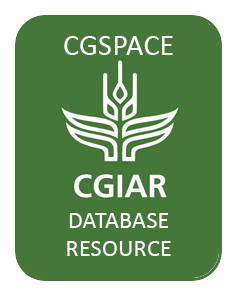This study conducted a participatory appraisal of climate vulnerabilities and conflict risks three communities across Kenya: 1) members of the Yiaku Indigenous Peoples in the Mukogodo Forest region, located in Laikipia County; 2) members of the Endorois Indigenous Peoples in the Lake Bogoria…
Smallholder production systems in low-income countries suffer the most from the impacts of climate change but receive the least benefit from climate adaptation programs. This is due to governance structures that make it difficult for governments and organizations to effectively reach…
Maize is the major food crop in eastern and southern Africa, including Kenya. Maize-based farming systems make up the largest proportion of agricultural land, and maize is central to the food system, in both rural and urban areas. Because of its importance, maize has received wide attention from…
Micro Small and Medium-Enterprises (MSMEs) in many developing countries play an important role in the agri-food systems. They provide employment opportunities as well as source of foods for urban consumers. In Kenya, the MSMEs provide an interesting disruption in the rapidly growing traditional…
Climate change and year-to-year climate variability have resulted in widespread, pervasive impacts to ecosystems and people in Africa, including increases in the intensity of weather extremes such as droughts and floods. While these shifting and varying temperature and precipitation patterns…
Maize is the most important staple in sub-Saharan Africa (SSA), with highly seasonal production. High storage losses affect food security, but good estimations are lacking. A new method using focus group discussions (FGDs) was tested with 121 communities (1439 farmers, 52% women) in Kenya's…
A study was carried out to profile potential mechanization hire service models in four counties in Kenya. The study profiled 6 models for mechanized hire services in agriculture that can be tapped depending on context of the farmers. These include 1) Individual farmer / entrepreneur service…
This country brief is part of the outputs for Work Package 5 of the CGIAR Initiative on Agroecology. The focus of Work Package 5 is understanding and then influencing individual and collective agency and behavior among food system actors (FSAs) to drive inclusive and equitable agroecological…
Feminist scholars and activists have drawn attention to the importance of
women’s land rights, and studies focused on irrigation have explored the gendered
relationships between land and water rights. Yet little of this work has focused
on the relationship between land and…
Agriculture is one of the fundamental pillars of the 2022–2027 Bottom-up Economic Transformation Plan of the Government of Kenya for tackling complex domestic and global challenges. Kenya's food system is crucial for climate change mitigation and adaptation. Kenya has prioritized aspects…
Agricultural mechanization is the use of machinery, equipment, and implements—rather than human or animal power—to carry out agricultural practices. When the use of mechanization is sufficiently high, it can help improve the overall efficiency of food systems, reduce the costs of producing…
A rapid assessment of the Green Leave Vegetables (GLV) value chain in the Kiambu Living Landscape shows that huge potential exists for agroecological transition in this region. At the farm level, farmers are already applying selected agroecological principles, such as a decrease in the use of…


